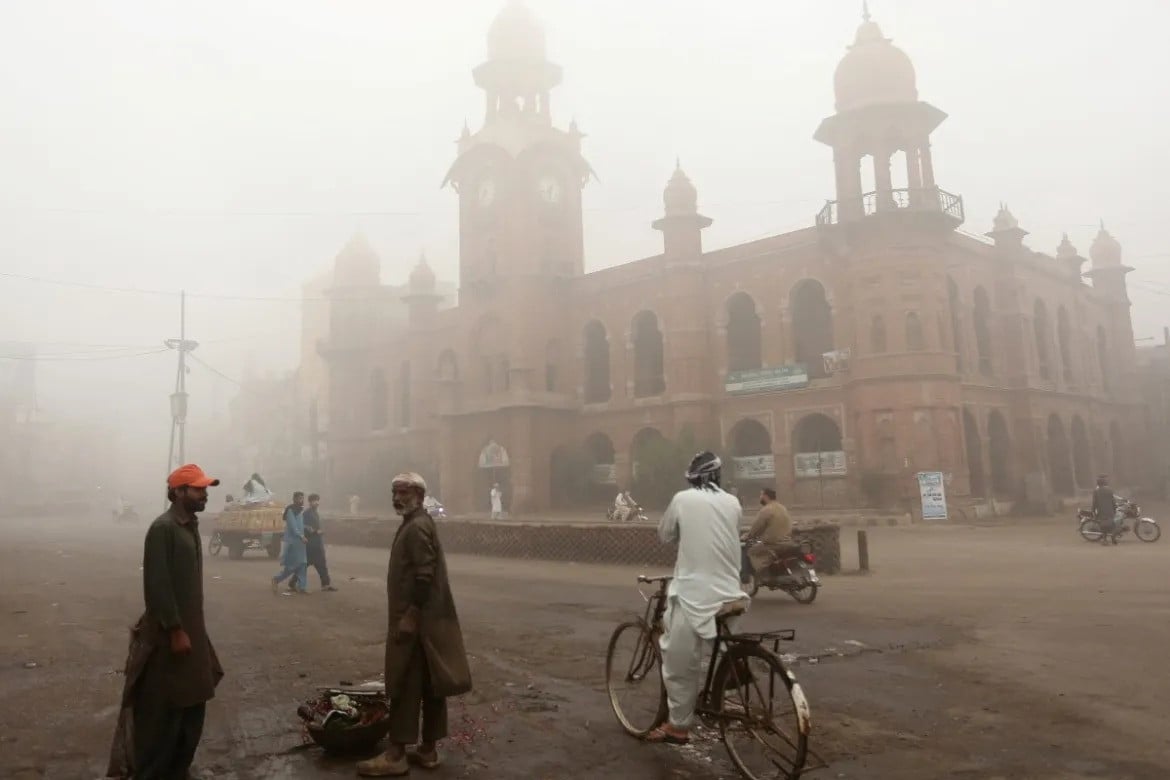
While major cities worldwide begin to illuminate with festive decorations in mid-November, northern Pakistan's urban centres brace for a season clouded by thick, hazardous smog.
The smog season, spanning November to February, exposes millions to dangerously high levels of particulate pollution. This air quality crisis now stands as Pakistan's second-largest health threat, trailing only the cardiovascular disease.
Hospitals and health services face an overwhelming influx of patients during this period, with hundreds admitted daily, many of them children suffering from respiratory and other pollution-related illnesses.
The economic impact is equally severe, with the World Bank estimating that air pollution costs Pakistan approximately 6% of its gross domestic product (GDP), or over $22 billion each year.
Initially, factors like cross-border pollution, stubble burning, and industrial activity, including emissions from brick kilns, were considered the primary culprits. However, recent data shows that emissions from over 6 million vehicles, including over 4 million motorbikes, plying Lahore account for about 83% of the pollution.
As the population and incomes rise, vehicle emissions are expected to drive pollution levels even higher in the coming years.
To tackle the crisis, the Punjab government has initiated measures such as the Green Transport Project, which aims to introduce 1,000 electric buses in major cities alongside stricter penalties for high-emission vehicles.
However, such efforts are insufficient to address the scale of the problem. A coordinated, long-term approach involving federal and provincial governments is essential to mitigate this growing health and environmental crisis.
We can learn from the examples of other big cities that have successfully tackled this problem. Only two decades ago, Beijing was called the "world's smog capital," with an estimated 2.6 million pollution-related deaths annually.
In preparation for the Beijing Olympics in 2008, China launched a rigorous air pollution control programme focused on transforming car-centric cities into hubs of electric public transport.
Strict regulations limited car use in city centres. Significant measures were taken towards full electrification of transportation, and this year, sales of battery electric and plug-in hybrid vehicles surpassed those of traditional internal combustion engines.
As a result, Beijing's PM2.5 pollution levels have decreased yearly over the past decade and now are two-thirds less than a decade ago.
Despite rising smog levels each year and knowing that transport is the major culprit, Pakistan's shift to electric vehicles (EVs) has been disappointingly slow.
In 2019, the government introduced an ambitious EV policy aiming for 30% passenger EV adoption or inducting 100,000 electric four-wheelers by 2030. Targets were also set for buses, trucks and half a million two- and three-wheelers. However, the country has achieved less than 1% of these goals five years later.
A critical factor for this failure is the government's inability to effectively implement policies that incentivise or require a transition from fuel-intensive, high-emission vehicles to cleaner, more sustainable EVs.
For the past four decades, Pakistan has been focused on localisation policies, aiming for domestically assembled cars to use local components primarily. The hope was that once this goal was achieved, costs would decrease, and Pakistan would gain the economies of scale necessary for exports.
However, these policies have failed to meet any of these objectives. Primary beneficiaries of these policies are a handful of foreign companies that use such policies as barriers against new assemblers and to avoid competition against imports of more economical cars.
Not only our disastrous policies discourage foreign investors from setting up EV assembly plants in the country, but they also impede import of built-up EVs through heavy import taxes.
Globally, EV prices have dropped significantly, making affordable models comparable in cost to the traditional internal combustion engine vehicles. Thailand, often referred to as the "Detroit of Asia," exemplifies this shift.
Under the China-Asean Free Trade Agreement, the country has reduced taxes on EV imports from China to quicken its transition to EVs. Their forward-looking policies have already attracted over $2 billion in investment from leading Chinese manufacturers aiming to make Thailand a regional export hub for vehicles.
Despite the proven success of international models, Pakistan remains entrenched in outdated, protectionist auto policies, favoring an inefficient and unsustainable approach. The country continues to pour billions into importing CKD (completely knocked down) kits and petroleum products, fueling vehicles that consume three times more energy than electric vehicles.
Meanwhile, vested interests block the import of more economical, eco-friendly cars from China under the free trade agreement – a model that has transformed Thailand's auto market.
The consequences are staggering; Pakistan incurs a cost of over $20 billion annually due to smog-related issues, billions more on fuel imports, and faces a deteriorating quality of life. Major cities in Punjab and K-P are becoming increasingly unliveable.
Without a swift policy overhaul to curb transport emissions and embrace successful global practices, Pakistan faces an irreversible harm to both its environment and the health of its citizens. The time to act is now.
The writer is a Senior Fellow at Pakistan Institute of Development Economics. Previously, he has served as Pakistan's ambassador to WTO and FAO's representative to the United Nations at Geneva


1725784957-0/Tribune-Pic-(17)1725784957-0-165x106.webp)
1724760612-0/Untitled-design-(12)1724760612-0-165x106.webp)














COMMENTS
Comments are moderated and generally will be posted if they are on-topic and not abusive.
For more information, please see our Comments FAQ